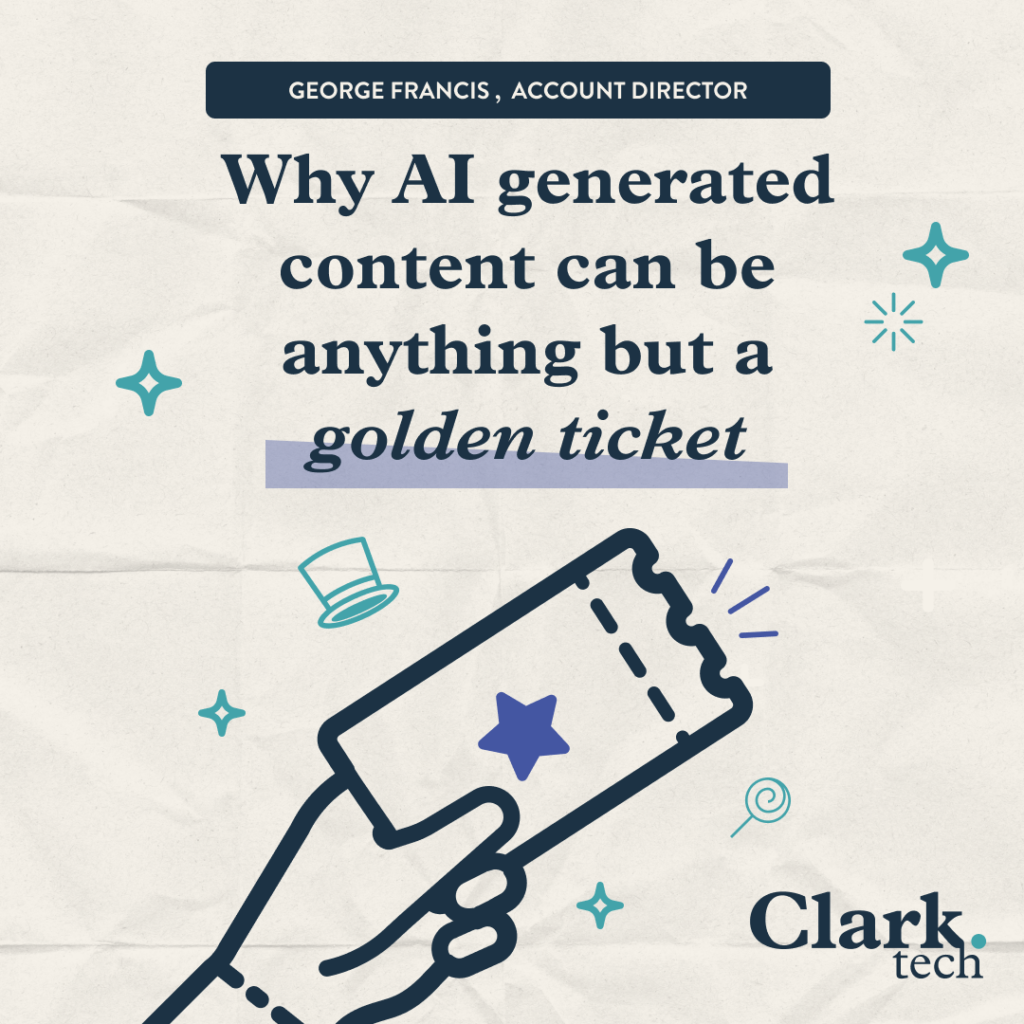You’d have had to be living on the moon (or maybe locked in a fantastical chocolate factory) not to have noticed a certain confectionery-themed news story that has hit something of a sour note last week. The tale in question is, of course, Glasgow’s very own Willy’s Chocolate Experience that has featured in media outlets from The New York Times to India Today. And while I could write a very lengthy crisis communications blog on the subject, that isn’t what I want to focus on today.
Working primarily in technology I’ve had the great pleasure to work with clients doing truly incredible things with AI. From unbelievable medical innovations to huge steps in customer service and everything in between, there are a lot of people out there doing some fascinating things with this new tech. And there’s one thing they all have in common – they get that artificial intelligence is not just a shortcut to quick results.
The idea that you can ask your generative AI platform of choice to spit out copy for a website, content for a suite of marketing materials or even a full novel based on a few prompts is, frankly, for the birds. At least it is if you want the end product to be anything more than pure gobbledygook. Unfortunately, it seems this is exactly what the mastermind behind Glasgow’s Chocolate Experience has done, with predictably bad consequences.
While there are certainly AI tools out there that can help with some of the above tasks, without real, human expertise to support the AI powered large language model, the quality of what you get will be questionable – at best.
So, what lessons can we learn from the mistakes that have come under the microscope in Glasgow last week?
Where’s the humanity?
If you read the copy on the experience’s website it reads like it’s been written by a robot…because that’s exactly what it is. It sounds almost like an actual person has written it – but not quite. It’s as though ‘human’ is the author’s second language. Perhaps a couple of years ago it might not have been quite so obvious but, as audiences become more and more savvy, this kind of thing stands out like a sore thumb.
Engaging copy needs to be relatable, based on real experience and above all, human. If your copy doesn’t sound like a real person then it’s unlikely a real person is going to spend time reading it. The best way to achieve this balance? Get a real person to write it!
AI images aren’t fooling anyone.
There’s something a bit creepy about AI generated images. It’s a kind of uncanny valley thing. The colours are a bit off, nothing is quite the right proportion, and the facial expressions are all just a bit too much – like the smile on the creepy clown doll in Poltergeist. And that’s before we’ve even mentioned the fingers.
Design, look and feel isn’t something you can outsource (successfully) to a computer, especially if it needs to fit into a broader style.
You can’t beat a right good proofread.
AI generated copy is often littered with typos, sentences that don’t make sense and words used completely out of context. It’s clear when nobody has carefully read the copy – or even read it at all. Even the most experienced professional communicators benefit from a second pair of eyes (at Clark, we insist on it) and it’s amazing what can slip through when you’re the only one who has read it. I can almost guarantee the first draft of this blog will have had a typo or a slightly off sentence in it somewhere [note from ‘second eyes’ – it did] – there’s a prize if you find one now (there’s not really).
No matter how good your comms are, they can’t save a bad product
And, finally, the most important rule of all. If your end product is garbage, then even the world’s most talented wordsmith isn’t going to save you from criticism. Quality product must come first.


